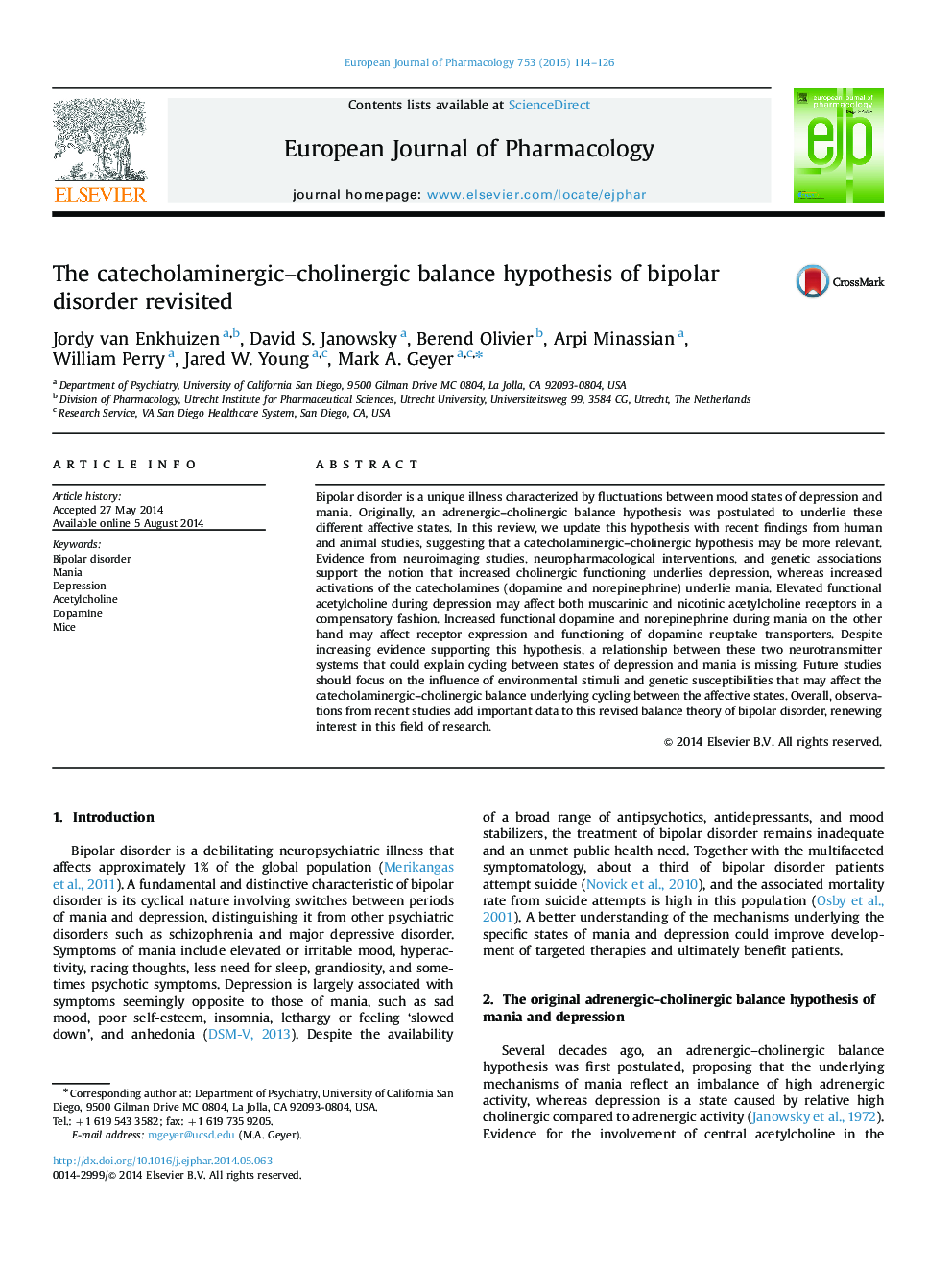| Article ID | Journal | Published Year | Pages | File Type |
|---|---|---|---|---|
| 5827464 | European Journal of Pharmacology | 2015 | 13 Pages |
Bipolar disorder is a unique illness characterized by fluctuations between mood states of depression and mania. Originally, an adrenergic-cholinergic balance hypothesis was postulated to underlie these different affective states. In this review, we update this hypothesis with recent findings from human and animal studies, suggesting that a catecholaminergic-cholinergic hypothesis may be more relevant. Evidence from neuroimaging studies, neuropharmacological interventions, and genetic associations support the notion that increased cholinergic functioning underlies depression, whereas increased activations of the catecholamines (dopamine and norepinephrine) underlie mania. Elevated functional acetylcholine during depression may affect both muscarinic and nicotinic acetylcholine receptors in a compensatory fashion. Increased functional dopamine and norepinephrine during mania on the other hand may affect receptor expression and functioning of dopamine reuptake transporters. Despite increasing evidence supporting this hypothesis, a relationship between these two neurotransmitter systems that could explain cycling between states of depression and mania is missing. Future studies should focus on the influence of environmental stimuli and genetic susceptibilities that may affect the catecholaminergic-cholinergic balance underlying cycling between the affective states. Overall, observations from recent studies add important data to this revised balance theory of bipolar disorder, renewing interest in this field of research.
